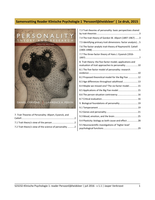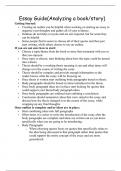Samenvatting
Summary S23232-Klinische Psychologie 1 - OU-reader
- Instelling
- Open Universiteit (OU)
Reader over persoonlijkheidsleer, behorende bij de OU-module 'Klinische Psychologie 1'. Het betreft hier de module met ingangsdatum september 2015. De samenvatting is 29 pagina's lang.
[Meer zien]













